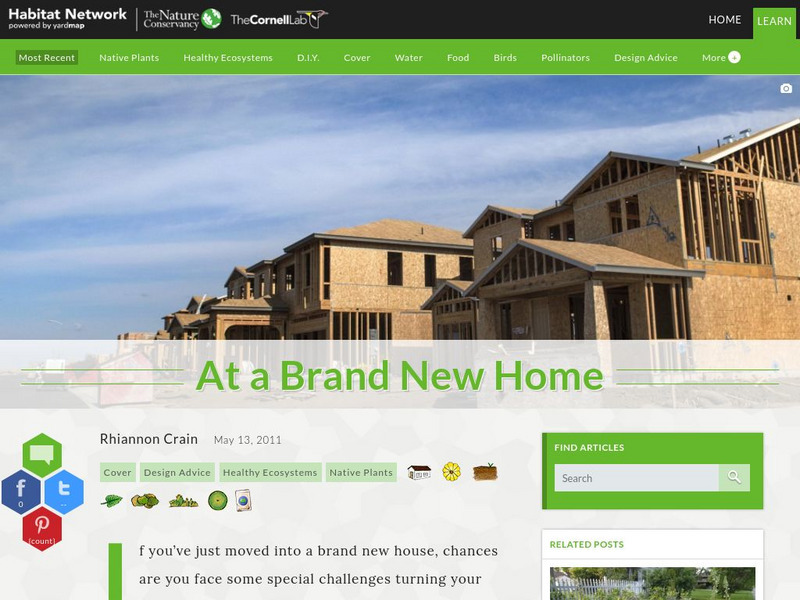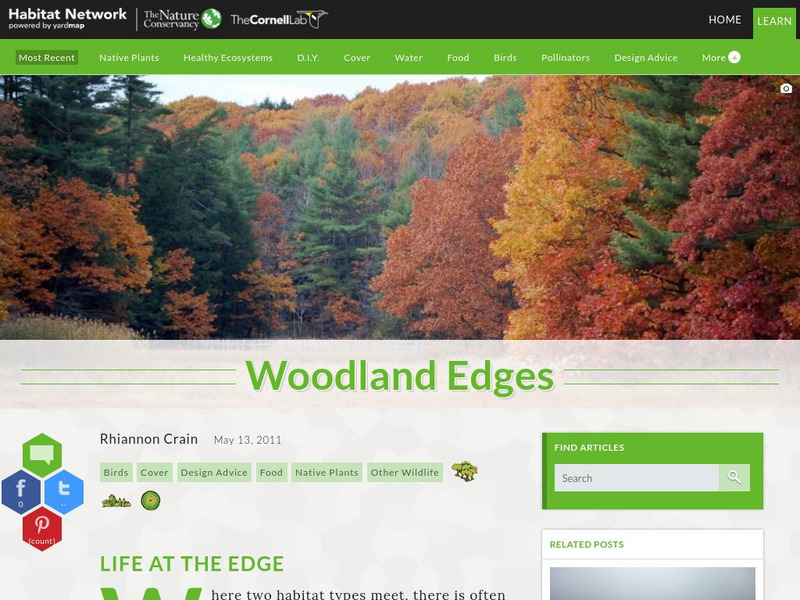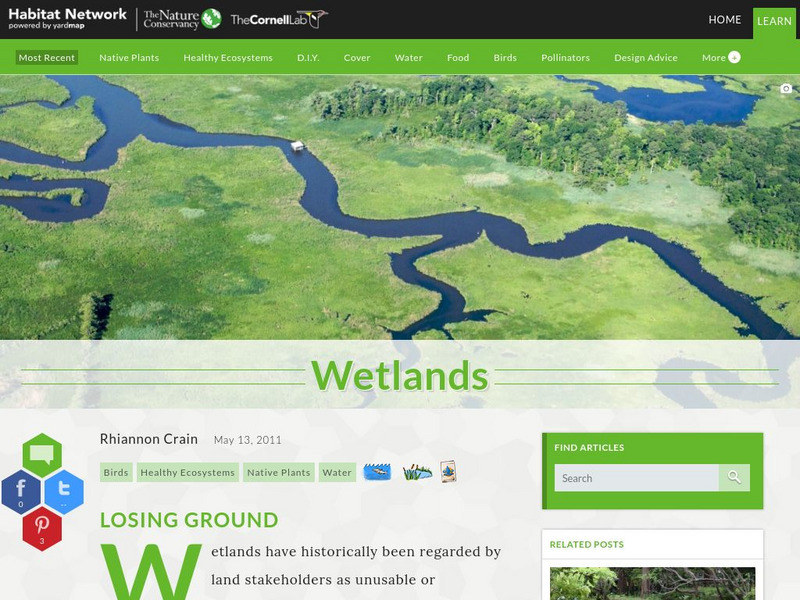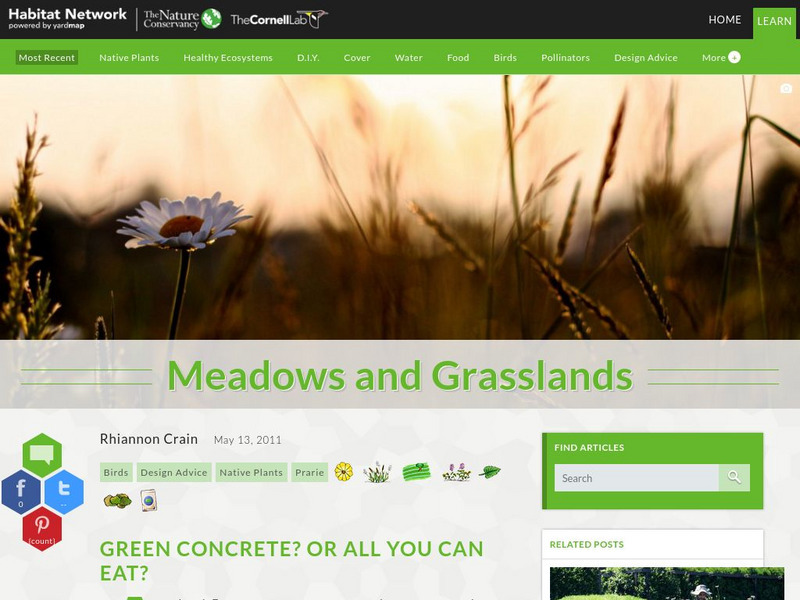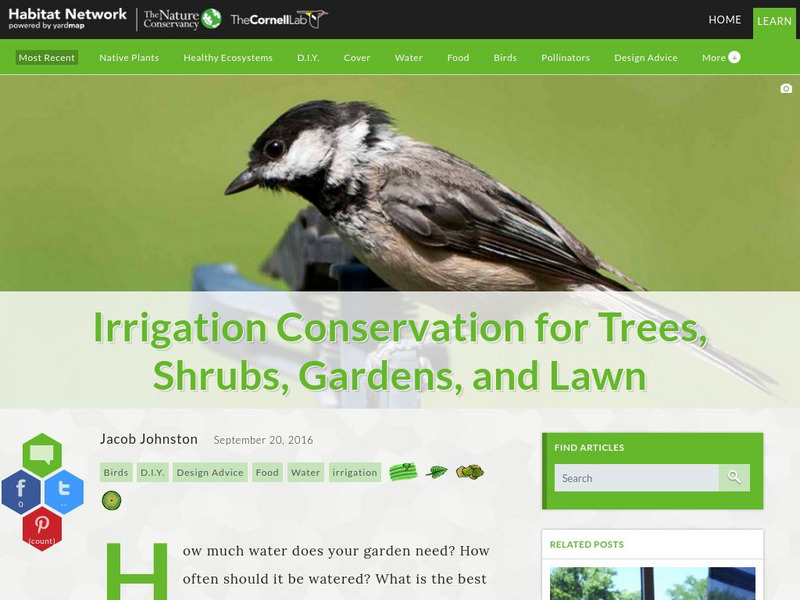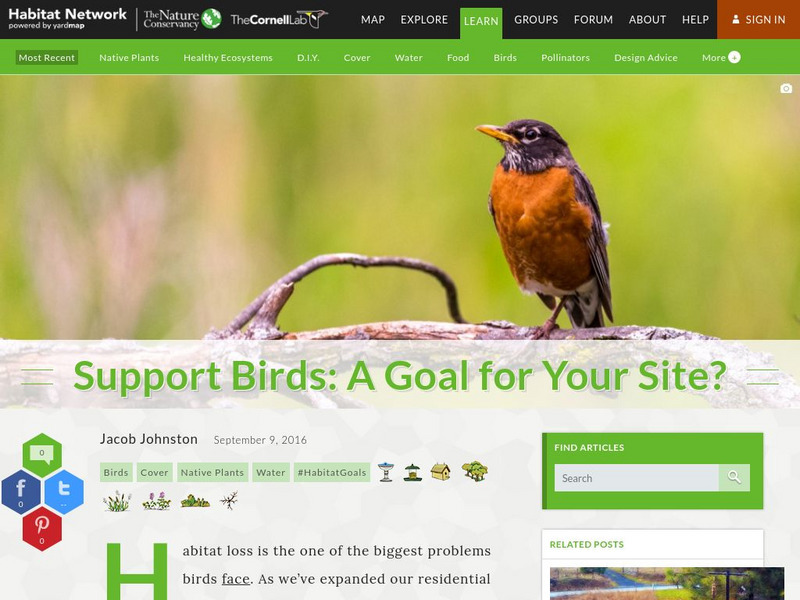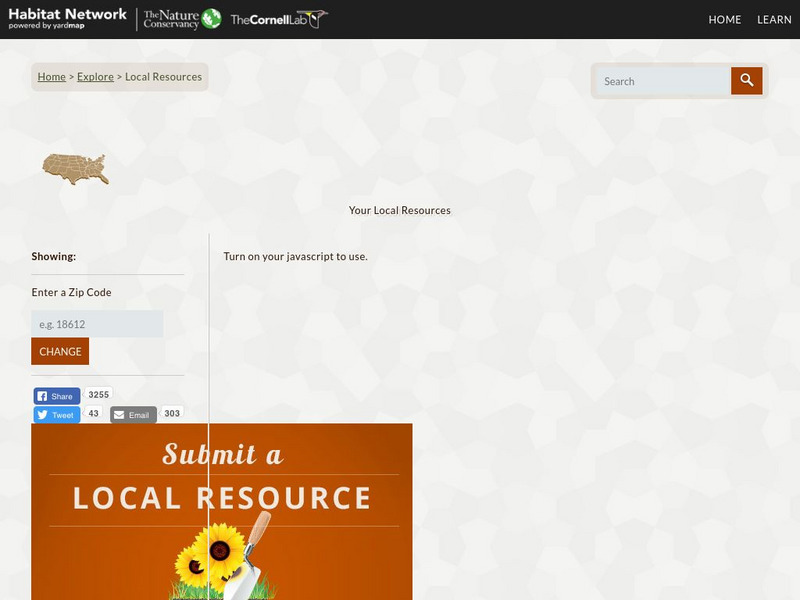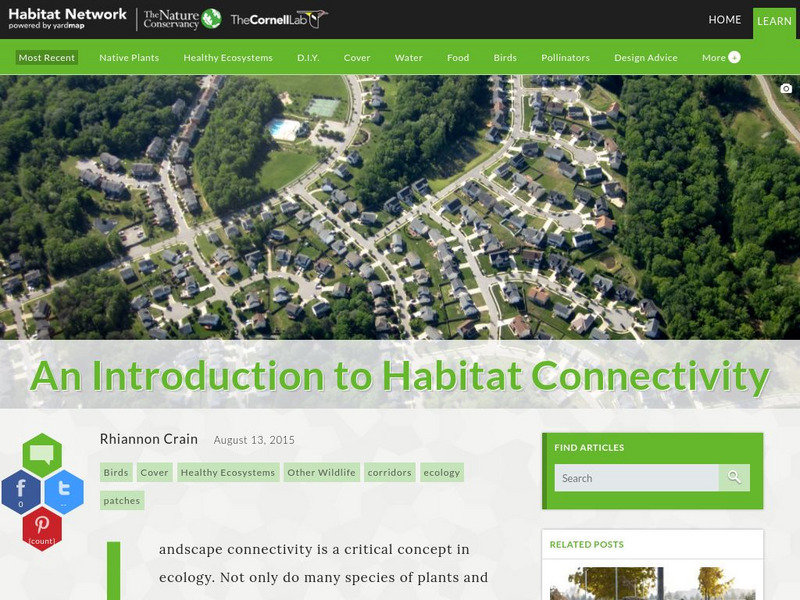Hi, what do you want to do?
Cornell Lab of Ornithology
Habitat Network: Native Flowerbeds
Find out why flowering plants are foundational in the understory of a structurally diverse habitat.
Cornell Lab of Ornithology
Habitat Network: Installing and Maintaining a Native Lawn
Learn how the native approach can improve a yard to provide habitat for birds and other wildlife while keeping a grassy open area for recreation.
Cornell Lab of Ornithology
Habitat Network: At a Brand New Home
Find out what to do with the habitat of a blank canvas at a new home landscape.
Cornell Lab of Ornithology
Habitat Network: On a Median
Find out about the habitat along the sides and medians of millions of miles of roads.
Cornell Lab of Ornithology
Habitat Network: Woodland Edges
Find out about the higher bird diversity at the boundary of two habitat types than in either type individually.
Cornell Lab of Ornithology
Habitat Network: Wetlands
Find out how to support wetland plants and animals in a backyard habitat.
Cornell Lab of Ornithology
Habitat Network: Meadows and Grasslands
Learn how to create a backyard habitat which provides a more meadow-like environment for birds.
Cornell Lab of Ornithology
Habitat Network: In Your Yard
Use this guide to create a habitat that attracts and sustains various bird species.
Cornell Lab of Ornithology
Habitat Network: Don't Be an Ecological Trap
With the help of some economics metaphors, Habitat Network delves into the scary-sounding "ecological trap" and helps bring it to light.
Cornell Lab of Ornithology
Habitat Network: Habitat Feature: Bare Earth for Native Pollinators
Find out why keeping a part of your yard as bare ground is important for providing nesting habitat for native bees.
Center for Innovation in Engineering and Science Education, Stevens Institute of Technology
Ciese Collaborative Projects: Bucket Buddies: Environmental Study
Bucket Buddies is an opportunity for learners to participate in a world-wide environmental study. By identifying organisms in pond water, participating classes can compare their findings, and look for relationships in data. In addition...
Cornell Lab of Ornithology
Habitat Network: Irrigation Conservation for Trees, Shrubs, Gardens, and Lawn
Find out how to provide the proper amount of water for optimal growth and biodiversity in a backyard habitat.
TeachEngineering
Teach Engineering: Life Science
This unit covers the processes of photosynthesis, extinction, biomimicry and bioremediation. In the first lesson on photosynthesis, students learn how engineers use the natural process of photosynthesis as an exemplary model of a complex...
Penguin Science
Penguin Science: Penguins Marching Into the Classroom
Follow Adelie Penguin families as they raise their chicks. Daily pictures (November through January) from the penguin colony on Ross Island, Antarctica. are posted with data for students to keep a field journal. Inquiry classroom...
Cornell Lab of Ornithology
Habitat Network: Support Birds: A Goal for Your Site?
Find out what citizen scientists can do to provide appropriate habitats for native birds.
Cornell Lab of Ornithology
Habitat Network: Your Local Resources
Enter your zip code, and find out about your ecoregion, a unique combination of living and nonliving factors that set your landscape apart and determine what will flourish there.
Friends of Algonquin Park
The Science Behind Algonquin's Animals: Moose
Information is provided on the moose, its general appearance, weight, migration, food sources, habitat, and major predators. This is excellent information for a student research project.
Cornell Lab of Ornithology
Habitat Network: An Introduction to Habitat Connectivity
Find out about the idea that landscape connectivity is a critical concept in ecology.
Cornell Lab of Ornithology
Habitat Network: Habitat Feature: Bat Houses
Find out how providing bat houses can be beneficial to a habaitat.
Cornell Lab of Ornithology
Habitat Network: Habitat Feature: Sun Perches
See why many species use perches near their water source to take in the sun's warmth.
Science Buddies
Science Buddies: M&m Survival Challenge
In the wild, there are two types of animals: the hunters and the hunted. A good predator is always on the prowl for fresh prey. What can an animal do to stay off of the menu? Find out how some animals use camouflage, and why sometimes it...
Writing Fix
Writing Fix: A Habitat for a Wild "Pet"
After observing and naming elements of an animal's habitat, and reading The Salamander Room by Anne Mazer, students write fictional stories about finding and caring for a wild animal. A printable graphic organizer, a teacher example, and...
Cornell Lab of Ornithology
Habitat Network: Discouraging Mosquitoes and Providing Habitat for Wildlife
Find out about some wildlife friendly tips for reducing mosquitoes in yards.
Cornell Lab of Ornithology
Habitat Network: Habitat Feature: Logs
Evaluate the importance of a fallen tree in a forest ecosystem.







